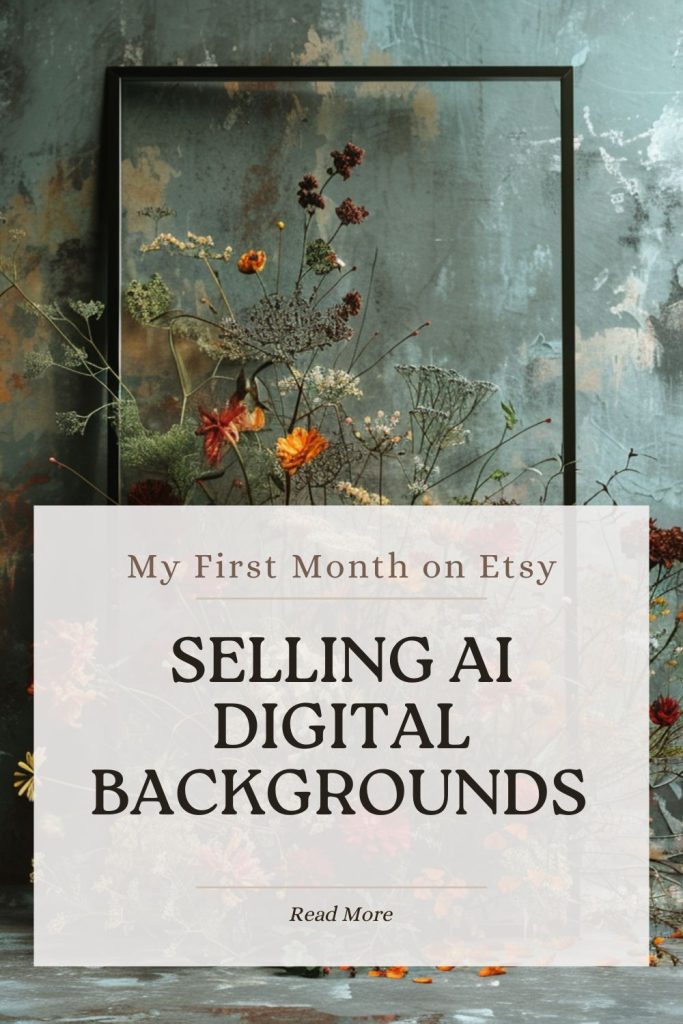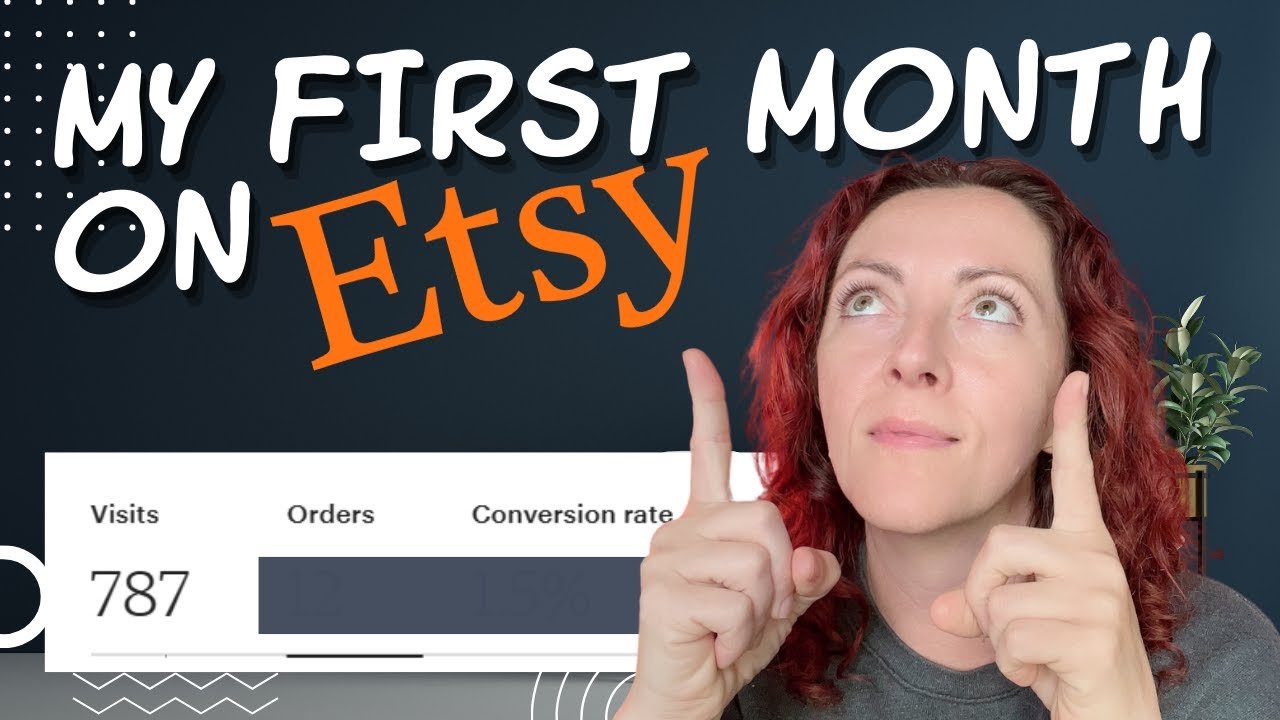If you’ve been looking for a low-effort way to start making digital income, Etsy is one of the easiest places to begin. You don’t need to be a professional photographer or designer. You don’t need inventory. And you definitely don’t need to go viral. With a handful of simple tools and a few hours a week, it’s possible to start selling digital images that people actually want to buy.
One of the fastest-growing niches right now is AI-generated backdrops—digital scenes photographers can drop clients into. Whether you’re already playing around with tools like Midjourney or just curious about passive income, this is a practical, creative business you can start today.
Everything shared below comes from real-world results, not theory. If you’ve been waiting for a sign that this kind of side hustle is worth trying, here it is.
Why Etsy Is a Smart Starting Point for Digital Image Sellers
Etsy isn’t just for handmade mugs and crochet hats. It’s also one of the easiest platforms to break into if you’re selling digital files—especially images. People are already searching for backdrops, templates, overlays, printable art, and design assets. That means you’re not trying to convince anyone to want what you made. You’re just putting your work in front of buyers who are already looking.
Unlike social media, you don’t need a following to get found. And unlike Amazon or Shopify, you don’t need to deal with inventory, shipping, or complicated setup. You can literally upload a file, set your price, and you’re in business.
The best part? Once your product is live, it can sell again and again without any extra effort. That’s what makes Etsy a smart play if you’re hoping to build up a creative income stream in the background while you’re busy doing other things.
What Sells Well on Etsy? (Digital Backgrounds & Beyond)
Etsy buyers aren’t just browsing—they’re searching with intent. And digital downloads are one of the top-selling categories on the platform. If you’ve got an eye for design, or even just a good prompt and a few AI tools, there’s room for you to stand out.
Some of the most popular digital products include:
- Photography backdrops – seasonal scenes, studio-style walls, dreamy outdoor settings
- Portrait overlays and textures – used by photographers to stylize or enhance client images
- Printable wall art – quotes, abstracts, nursery prints
- Mockups – product displays for other Etsy sellers
- Templates – planners, checklists, social media graphics
The sweet spot? Niche products that serve a specific buyer. For example, AI-generated fantasy backgrounds for kids’ portraits or pet photography scenes with soft lighting and seasonal props. These fill a need—and fast. Many buyers are photographers or small shop owners who don’t have time to create assets themselves, so they’ll happily buy them ready to use.
If you’re unsure what direction to take, tools like Everbee can help you research what’s trending. You can even use them to analyze top sellers in your niche before creating a single image.
How I Made My First Sales (A Realistic Timeline)
You don’t need hundreds of listings or a perfect brand to make your first sale. What helped me get traction was putting up a handful of high-quality digital backgrounds and focusing on two things: making them look useful, and making them easy to find.
Here’s what that first month looked like:
- Days 1–3: Researched the market using Everbee to see what kinds of digital backdrops were already selling. I looked at price points, popular styles, and how many sales top shops were getting.
- Days 4–7: Used Midjourney to create my first batches of AI-generated images. I aimed for practical themes—studio-style setups, holiday scenes, or fairy-tale settings people could drop their subjects into.
- Week 2: Uploaded my first listings. I used ChatGPT to help write better descriptions and filled in tags and titles based on what Etsy search showed me. No branding, no perfect banner—just focused on the listings themselves.
- Week 3: Got my first sale. I didn’t use ads. It came from organic search.
- Week 4: More listings, slightly better thumbnails, and I cleaned up my shop visuals. At this point, I had sales and a few good reviews, which helped build momentum.
That first month taught me that the key isn’t volume—it’s getting a few things right: what people are searching for, how your preview images look, and how quickly someone can picture themselves using what you made.
Tools I Used (and You Can Too)
You don’t need a huge tech stack to start selling digital images. These are the exact tools that helped me go from idea to sale—most of them free or low-cost, and beginner-friendly even if you’re not a designer.
🧠 Midjourney
For creating the actual backdrops. I used simple prompts and refined as I went. If you’re not confident in your own artwork, AI tools like Midjourney are an easy way to start producing quality visuals fast.
✍️ ChatGPT
For writing titles, tags, and product descriptions. Etsy rewards relevance, so I used ChatGPT to help write clear descriptions that include the kinds of phrases buyers are searching for—without sounding robotic.
🔍 Everbee
To spy on what’s selling. This browser extension shows how often a listing sells, average price points, and keyword demand. Great for validating ideas before wasting time on something no one wants.
🛠️ Canva
Used to turn AI images into actual product previews, add text overlays, and create listing thumbnails. It makes your store look polished even if you’re starting from scratch.
📦 Optional Extras:
- Pinterest or Instagram: If you want to promote listings off Etsy
- Motion: Just to stay organized as you grow
You don’t need all of these to begin. If you have a way to make images, write listings, and upload files, you’re good to go. The rest just helps speed things up.
Common Roadblocks (And How to Push Through)
Starting anything new comes with a learning curve. Etsy is no different—but most of the obstacles are mental, not technical. If you’ve ever started a project and then abandoned it halfway, this might sound familiar.
🔄 “What if no one buys it?”
Totally normal thought. The trick is to get that first product up anyway. Etsy listings are low-risk. You can test and tweak as you go. Your first sale won’t come from perfection—it’ll come from action.
😖 “I don’t know what I’m doing.”
Neither did anyone else at the beginning. I had no idea if Midjourney prompts would give me usable images or if my titles were any good. But every listing taught me something. That feedback loop is what actually builds skill.
👀 “No one’s seeing my listings.”
It’s frustrating to put in effort and get silence. But Etsy search takes time. Your early listings are about gathering data: which keywords bring traffic, what thumbnails get clicks, what price points convert. You’re building a system, not chasing one viral hit.
😩 “I feel stuck already.”
This one hits hard, especially when motivation dips. When in doubt, lower the bar. Upload one new image. Try one new title variation. Forward motion—even tiny—is what separates people who quit from people who figure it out.
Tips to Boost Your First Sales Faster
Getting your first sale on Etsy doesn’t require a perfect shop or tons of products—but a few smart tweaks can make a big difference. Here’s what actually helped:
🏷️ Use Clear, Searchable Titles
Think like a buyer. Instead of “Magical Forest,” try “Whimsical Fairy Forest Digital Backdrop for Photographers.” Use terms people would actually type into search.
🖼️ Make Your Thumbnails Count
Your cover image is your click magnet. Use Canva or Photoshop to add a subtle label like “Backdrop for Pets” or “Holiday Scene.” Make it obvious what the buyer is getting without needing to read the listing.
📥 Offer Instant Value
Digital files should be easy to download and use. If your product requires special instructions or editing steps, add a simple how-to PDF in the download or link to one in the listing.
📦 Create Small Bundles
Listings with more perceived value tend to convert better. Try grouping 3–5 themed images (like “fall backdrops” or “neutral studio scenes”) into a single listing to raise your price and make the buyer feel like they’re getting a deal.
📣 Promote Where It Makes Sense
Pinterest, Instagram, or even Facebook groups can help you drive early traffic. But keep it light. Your time is better spent improving listings than chasing clicks all day.
What I’d Do Differently If I Were Starting Today
Hindsight’s great when it saves you time. Here’s what I wish I’d done sooner—so you don’t waste a month figuring it out like I did.
🎯 Pick a Tighter Niche From Day One
Instead of uploading random backdrops, I would’ve picked a clear audience—like newborn photographers, pet portraits, or fantasy scenes—and doubled down. Etsy rewards relevance, not generalism. When your shop speaks to one type of buyer, your listings convert better.
🖼️ Lead With Stronger Cover Images
Early on, I treated the previews like an afterthought. Big mistake. Your thumbnail is what gets the click. Even great images won’t sell if the preview doesn’t make that obvious.
🔎 Do Keyword Research Before Creating
I created what I thought looked cool, then tried to figure out how to title it. Backwards. Now I look at what people are already searching for, and build listings to match.
🧹 Clean Shop Setup From the Start
At first, I uploaded listings with zero branding or polish, thinking I’d fix it later. But first impressions matter. Just a simple banner, shop logo, and a few consistent listing formats would’ve built trust faster.
Quick Start Checklist
You don’t need to be an expert, an artist, or even particularly confident to start selling digital images on Etsy. You just need a process you can repeat—and the willingness to keep going when it feels awkward at first.
The first sale is the hardest. After that, it becomes a game of testing and refining. Make something useful. Get it listed. Improve the next one. And eventually, your shop starts to work for you.
If you’re feeling stuck, here’s a simple checklist to get moving:
✅ Etsy Digital Image Quick Start Checklist
- Use Everbee to research top-selling digital products
- Choose one clear niche to start with (photographers, pet owners, fantasy lovers, etc.)
- Use Midjourney (or your preferred tool) to create 3–5 themed images
- Design clean thumbnails with Canva that show the image in use
- Write searchable titles and clear, simple descriptions with ChatGPT
- Upload listings with digital download settings enabled
- Create one shop banner and upload a basic logo for trust
- Hit publish—even if it’s not perfect
You can optimize later. But your shop doesn’t exist until your listings do.
FAQ: Selling Digital Images on Etsy
Can you really sell AI-generated images on Etsy?
Yes, but there’s a catch. Etsy allows AI art as long as you created it. Don’t upload random images you found or generate things based on copyrighted prompts. Keep your creations original, and always check Etsy’s most current policies.
How many listings should I start with?
Start with 5–10 listings. That’s usually enough to see what people are clicking on without overwhelming yourself. It also gives Etsy’s algorithm something to work with so your shop gets indexed properly.
Do I need to run Etsy ads to get sales?
Nope. Most early sales come from good SEO and clear thumbnails. Ads can help later, but they’re not necessary to get started—and definitely not worth it if your product listings aren’t converting yet.
What size should my digital image files be?
Most photographers prefer high-resolution JPG or PNG files, around 3000–6000px on the long side. Keep file sizes manageable (under 20MB per file when possible), and consider including a sizing guide or usage note in your download if needed.
What if nothing sells?
That’s normal in the beginning. Use the quiet time to tweak titles, try new images, or improve your thumbnails. A listing that flops today might start selling after a seasonal shift or small change.




